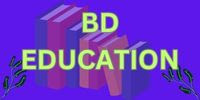Bangladesh, a South Asian country with a rich cultural heritage and a population of over 160 million, places significant importance on education. The government of Bangladesh has made notable strides in improving its education system over the years, striving to provide accessible and quality education to its citizens.
Educational Structure:
The educational system in Bangladesh follows a 5-4-3-2 structure. It consists of five years of primary education (age 6 to 10), four years of secondary education (age 11 to 14), three years of higher secondary education (age 15 to 17), and two to four years of tertiary education. Tertiary education includes colleges, universities, and specialized institutions.
Primary Education:
Primary education in Bangladesh is free and compulsory for children aged 6 to 10. The government aims to ensure that all children receive a basic education. Primary schools focus on providing a foundation in essential subjects like Bengali, English, mathematics, social studies, and general science.
Secondary Education:
After completing primary education, students proceed to secondary school for four years. At this level, the curriculum becomes more comprehensive, covering a broader range of subjects. The Secondary School Certificate (SSC) examination marks the completion of this stage and serves as a significant milestone for students.
Higher Secondary Education:
Higher secondary education lasts for three years and is not mandatory. Students can choose from different streams, including science, arts, and commerce. The Higher Secondary Certificate (HSC) examination, taken at the end of this stage, determines eligibility for tertiary education.
Tertiary Education:
Tertiary education in Bangladesh is offered by numerous universities, colleges, and specialized institutions. Public universities, such as the University of Dhaka and Bangladesh University of Engineering and Technology (BUET), are prestigious and highly sought after. Private universities have also gained popularity in recent years, offering a variety of academic programs.
Challenges in the Education System:
While Bangladesh has made significant progress in education, there are still challenges to be addressed:
Access to Education: Despite efforts to promote education, some regions still face challenges in ensuring equal access to quality education. Poverty, lack of infrastructure, and cultural barriers can hinder children, especially girls, from attending school.
Quality of Education: While access to education is essential, maintaining the quality of education is equally crucial. Improving the standard of teaching, curriculum, and facilities remains a priority.
Dropout Rates: Dropout rates, particularly at the primary and secondary levels, are concerning. Economic factors, child labor, and early marriage are some of the reasons contributing to students leaving school prematurely.
Overcrowded Classrooms: In urban areas, classrooms can be overcrowded, making it challenging for teachers to provide individual attention to each student.
Relevance of Curriculum: The education system needs to adapt to the changing needs of the job market and the demands of the modern world. Incorporating relevant skills, such as digital literacy and critical thinking, is vital.
Conclusion: Despite the challenges, Bangladesh continues to strive towards a stronger and more inclusive education system. The government's commitment to investing in education and partnerships with international organizations has resulted in notable progress. With continued efforts and a focus on addressing the existing issues, Bangladesh can further enhance its education system, empowering its citizens for a brighter future.

